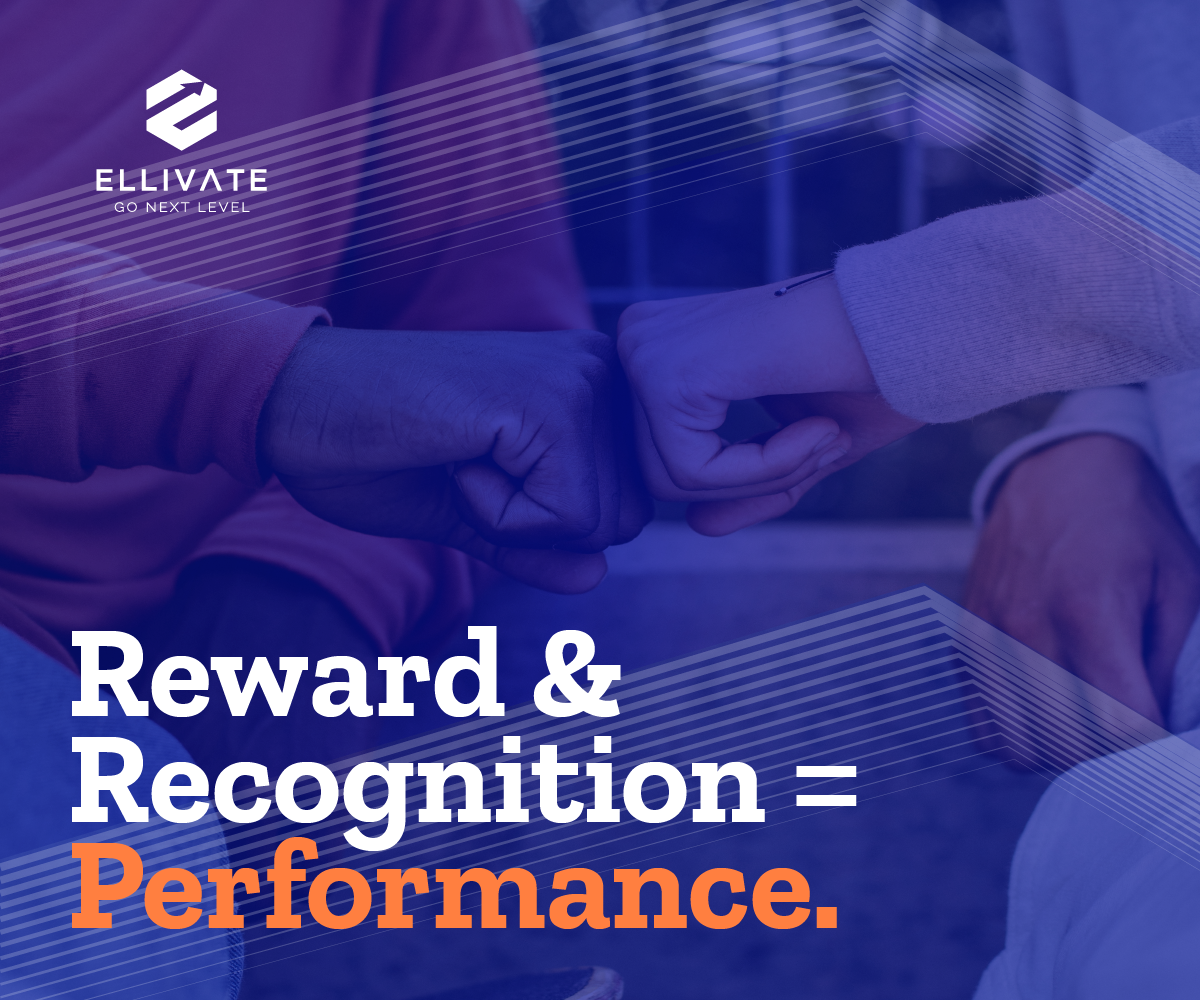How you reward and recognise your people is a foundation of effective leadership and high performing organisations. In the current competitive landscape, it’s even more critical. How we value our people is evolving and changing continually. You need to grow with it to ensure that you are creating a fantastic employee experience to retain and engage your most important asset – your people.
According to Bonusly, 63% of employees who are recognised are very unlikely to look for a new job. Reward and recognition is a powerful retention tool, and organisations quite often overlook it. If your organisation is not thinking strategically about staff recognition, then you need to start now. It does not need to be complicated, but recognition programs that allow both leaders and peers to recognise staff performance can drive many factors, including retention, engagement, and increase a positive customer experience.
Creating a reward and recognition program is a start. If you do not have one, you’d better get cracking. Organisations that do it well are constantly evolving their rewards and recognition programs. Likewise, growing and scaling companies must continuously reinvent their reward and recognition programs to maintain a competitive employee experience.
Let’s take a quick look at what employee reward and recognition means and why it matters.

What is reward and recognition?
Companies develop reward and recognition programs to acknowledge employees for their value and exceptional contributions to the success of a business. An effective employee reward and recognition program can help:
- To attract and retain top talent.
- Ensure that employees feel valued.
- Create a sense of appreciation.
- Act as a key motivator to achieve company goals.
- Drive high-performance culture.
- Increase employee engagement.
Why does it matter?
We all seek recognition from a young age; as children, we seek praise from our parents and family. As we grew older, this broadens to include teachers, managers, colleagues, teammates, and partners.
An employee reward and recognition program services these most basic human needs and enables your business to create a culture of high performing, productive and engaged people. This is critical to the long-term success of your business.
According to an OC Tanner employee survey, 37% of respondents said that more personal recognition would encourage them to produce better work more often.
7 tips for your reward and recognition program
1. Use Gamification – it works!
The element of competition is one of the best motivators for your people. This is where gamification can come into play (pun intended!) to create fun, motivate and reward team members.
Here are some best practices that you should consider when creating gamification for your teams:
- Keep it simple – don’t overcomplicate what people need to achieve to be rewarded.
- Have clear measures – you need to be able to measure what you are rewarding.
- Use a leader board – I believe it creates healthy competition. There are other views that this can have a negative impact, but if it is positioned correctly and fits in with your overall organisational culture and values, it can work well.
- Drive positive reinforcement – managers can recognise employees throughout the competition and share best practices and behaviours.
- Communicate, communicate, communicate – it’s not a set and forget until the end of the competition. So, keep communicating throughout, share successes and create healthy competition.

What are you doing to motivate and drive performance in your organisation?
2. Align rewards and recognition program to organisation goals
52% of employees feel that their rewards strategy isn’t aligned to organisational goals – Deloitte – a scary statistic if over half your staff, don’t see any alignment between what the organisation wants to achieve and how their efforts are rewarded!
- When creating any form of recognition program, ensure the following:
- It can be measured easily.
- Staff understand what they need to do to be rewarded.
- Map out rewards and recognition program against the organisation goals & outcomes.
If you cannot correlate between how staff are rewarded and what the organisation is achieving, you are measuring and rewarding the wrong things.
3. A “Thank-You” goes a long way…
50% of employees believe being thanked by managers improved not only their relationship but also built trust – Cicero Group.
A simple thank you can go a long way, and we do not use it often enough as leaders. Too often, we take what our teams do for granted, and in the virtual world, it’s more important than ever to connect with our teams and recognise their efforts.
Simple reward and recognition, such as a heartfelt ‘thank-you’, can motivate your team members. However, failing to do this can impact your teams, their motivation and most importantly, how likely they will stay with your organisation. According to research from Achievers, the lack of recognition and engagement is driving 44% of employees to switch jobs.
After investing heavily in the recruitment and onboarding of staff, failure to keep them engaged and lack of recognition will cost you even more. It’s crucial to bring your organisations culture and values to life daily, and leaders need to do this through their behaviours and actions, even if it is just a simple ‘thank-you’.

4. Sales Incentive Programs
According to the Incentive Research Foundation, incentivising sales teams is crucial for attracting and retaining talent.
Here are some tips when designing your sales incentive program:
- Keep it simple. You should be able to explain your commission scheme easily, and people should understand what they need to do to earn.
- A commission scheme needs to drive the right behaviours to ensure your sales team do the right thing for your customers and the organisation.
- A clear goal needs to be communicated – be specific and create an incentive that will drive the right behaviours to achieve the goal.
- Create simple sales plans so people are aware of the behaviours, actions and goals they need to achieve to be rewarded.
- Be creative when developing your rewards program. Cash is great, but other rewards can be just as powerful, whether it’s sporting event tickets, travel vouchers or team dinners.
- Use learning opportunities to help a team member grow and develop, or a lunch with an executive can be very impactful and motivating.
- Public or private recognition of the work that a staff member has done can have a considerable impact.
- Include all go to market teams in your incentive program and make it relevant to each function.
5. The right reward gets the right outcome.
Companies utilising an incentive program reported a 79% success rate in achieving their established goals when the correct reward was offered according to DCR Strategies.
As this statistic suggests, it needs to be the correct reward. There are many different rewards that you can offer that don’t have to be ‘cash’.
- Team celebrations
- Meals and entertainment
- High-value merchandise
- Point rewards redeemable for gift cards and services
- Certificates, plaques, medals etc
- Leader boards and interactive gamification
- Recognition for being the top performer⠀ ⠀
It may take some planning and coordination, but the effort will reap the rewards in terms of performance. It would be ideal if you had someone within your organisation responsible for incentive programs as part of their role, who understands the team’s motivations and can coordinate the ongoing activity to keep teams engaged.
6. Leaders go First!
When asked what leaders could do to improve engagement, 58% of respondents replied “give recognition” – Psychometrics.
Leaders across the business need to ensure that they take the time to understand the great work that their teams do every day. They must also take the extra step of understanding the individual to reward and recognise them in the most meaningful way.
This approach must be part of their daily routine:
- Observe
- Listen
- Identify
- Share
- Recognise
…the behaviours that your team are demonstrating!
Double down on what is working; remove anything that isn’t.
7. The power of peer-to-peer recognition
41% of companies that use peer-to-peer recognition have seen positive increases in customer satisfaction – Globoforce.
Often, we see recognition as having to come from the leader in an organisation, but this should not be the case. Having peers recognise significant behaviours can have multiple benefits:
- Drive a healthy collaborative culture
- Sharing of best practices
- Create a heightened level of listening and observation
- Increase in performance and productivity

If you can improve your levels of customer satisfaction and enhance the organisation’s culture, why wouldn’t you create a program like this?
Reward and recognition is a crucial component of any high growth scaling organisation. However, it doesn’t need to be expensive or complicated.
Ask your employees for candid feedback on what recognition means to them; you will be amazed at what you will discover and how simple it can be to inspire and engage your people to be their best.
At Ellivate, we understand the importance of an industry-leading reward and recognition strategy and its impact on your ability to Go Next Level. So book a meeting with us to kick start your reward and recognition planning process!
About Ellivate
Ellivate is the expert partner helping organisations and their go-to-market team’s scale.
Our powerhouse team of industry experts – with a combined 60 years of experience across the fintech, corporate and technology spaces – will work alongside your business to achieve your goals.
We have a shared passion for working with businesses to achieve rapid growth and apply an authentic, human layer of expertise that addresses the real challenges and concerns at the heart of your business.
We will work alongside you as a trusted and expert partner. We get in the trenches and ensure every solution is embedded within your business.




